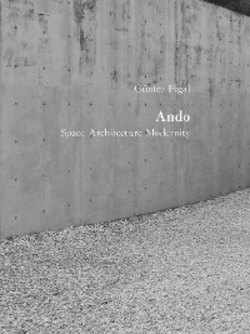Читать книгу Günter Figal - Ando - Günter Figal - Страница 7
Buildings as and in Space
ОглавлениеAs to the space-character of buildings, one may first think of what is most obvious and accordingly dominates the considerations pertinent to Foucault’s essay: buildings are places. As places, they receive people so they can sojourn in them, whether with different purposes or without any particular aim, simply occupying them, and in such a way that is essential to human life. Such buildings also receive things that are to be kept or stored in them, things necessary for realising diverse purposes and, first and foremost, items for furnishing houses so that they are habitable.
Buildings are places. However, it is not their place-character that enables diverse activities to take place in them and lets things find an accessible place in them. Buildings do not only receive, they also allow. Not only are they places, they also offer free space that allows specific ways of habitation to be realised. In offering free space, they themselves must be free spaces – to be lived in, worked in, taught and learned in, but also as spaces for leisure that allow rest and reposeful reflection. Admittedly, at least some of these ways of conducting life do not have to be realised in buildings alone, or buildings built for an explicit purpose. However, even buildings not created for specific activities must nevertheless also have the capacity to allow these to take place, while purpose-built buildings will, of course, support and favour the activities they were designed for. Many potential ways of life are, however, bound to the particular free spaces buildings offer. How, for instance, is one to produce something skillfully without a workshop or studio containing all the necessary tools? Effective research is dependent on libraries that provide all the literature needed, or on laboratories that provide the instruments necessary for scientific work. If one considers diverse buildings that support or allow certain activities as a whole, a clear view of the type of use and form of life will emerge. An ensemble of buildings, such as a village, a town, or a city, enables a particular way of life that although it is not homogenous in its entirety, encompasses manifold possibilities not reducible to a particular whole.
Buildings are places and free spaces. Yet this is not sufficient to determine their space-character: buildings are always limited in size and thus have a particular range, extension, and spaciousness or, to introduce a general term for all these characters, a particular wideness. Their boundaries can be more or less closed, consisting of either walls without doors and windows, or featuring open passages and glass facings. Whatever the case, the demarcations of a building separate interiors from exteriors, and so constitute the building’s particular inner scope – its wideness. The extent of an interior’s wideness will determine the distance that is possible between people and objects. And so the limitations of a building’s inner scope will enable people and objects to be distanced from one another to a greater or lesser extent.
However, as places, free spaces, and structures of limited wideness, buildings are not to be regarded as isolated. Not only are they places, they are also located at places. Having been erected somewhere, they can only be experienced in connection with the place they belong to and in relation to other buildings located at varying distances. Furthermore, buildings do not only offer free space, they also need free space. Without free space, they could not have been erected; there must have been ‘enough space’ available to build them. Likewise, they need free space in order to be accessible, and they also can only be visible with free space around them. Finally, buildings are not only of limited wideness, but are also placed in wideness – in varying distance to other buildings, either restricted in their outlook or positioned in such a way that they have an open view of the horizon.
Buildings, particularly those that stand at a particular place, in free space and of a certain wideness determine the space they come to occupy. Erecting a building somewhere changes that place. It is no longer a simple place, but is now twofold; one can only be at this place while in the building that has been built on the site or by being close to it. A building as place, on the other hand, is determined by the place at which it was erected; by being in this building, one sojourns at the building’s place. This place belongs to the place-character of a building, and at best a building harmonises with the place where it has been built. It will then accentuate this place in a way specific to the building and impossible without it. Likewise, a building belongs to the free space it needs. Sojourning in a house or a garden one will at once experience the free space offered by the building and the free space the building needs. Conversely, this free space is dominated by the building in such a way that it cannot be experienced without the building. Also, the limited wideness of a building belongs to the wideness in which the building is situated. This wideness determines the building, and conversely the building has changed it, for instance through its limitedness. The open space in which a building was erected can appear with the building as less open or, being viewed in contrast to the limited wideness of a building, the wideness of a landscape can appear even wider.
